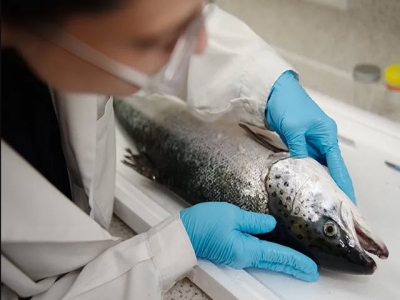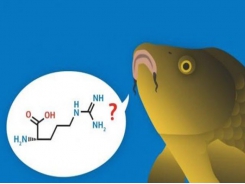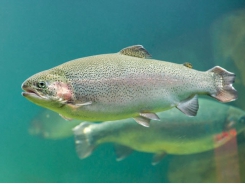Researchers look to new ways to tackle CMS in salmon

Experts from the Scottish aquaculture industry, academia and veterinary diagnostics, are aiming to develop a new early warning system for cardiomyopathy syndrome (CMS), one of the salmon farming sector’s most significant challenges.
Cardiomyopathy syndrome (CMS) is a growing health issue for farmed Scottish salmon. Photo © SAIC
CMS - a fatal viral disease which causes inflammation of the heart - is an increasing issue for the Scottish salmon industry. While the triggers of the disease are not fully understood, it is known to be caused by piscine myocarditis virus (PMCV) and can lead to heart failure in apparently healthy fish - resulting in significant stock losses. In Norway, CMS is considered to be the biggest cause of economic losses to the salmon industry, after sea lice and handling, and cost the industry an estimated €145 million in 2018.
The project consortium - which includes Cooke Aquaculture, the University of Edinburgh, Life Diagnostics, Benchmark Genetics, Moredun Research Institute and the Scottish Aquaculture Innovation Centre (SAIC) - aims to identify specific cardiac markers in the blood of fish, which can be used to detect CMS prior to signs of clinical disease. In both human and veterinary medicine, cardiac issues are already detected via biomarkers, measured using commercial testing kits.
While there is no vaccine or treatment for CMS, a warning system would enable salmon producers to better manage the disease and take preventative steps to improve fish welfare and minimise the economic impact of the disease. In its early stages, CMS is difficult to detect and fish can be infected for some time before symptoms appear.
The team will identify new cardiac markers to specifically detect heart disease in salmon and apply these to diagnostic techniques currently used in human and veterinary diagnostics. This will include tests adapted for on-site farm testing with the ability to provide results in less than three hours. The biomarkers could also help to differentiate between CMS and other salmon heart diseases, such as pancreas disease and heart and skeletal muscle inflammation.
In addition to the detection of disease, the project outcomes could also contribute to future genetic breeding programmes against CMS, using the methodologies developed in this project to select fish that show physiological resistance to the disease.
Dr Jorge del Pozo, from the Royal (Dick) School of Veterinary Studies at the University of Edinburgh, said: “The outcomes of this project have the potential to significantly improve fish welfare and reduce the impact of cardiac disease. An early warning system would be a major benefit for salmon farmers, who can use this information to take measures to reduce the impact of CMS. This is especially important for this disease, as targeted treatments are not available and our understanding of CMS is still a work in progress.”
Dr Andrei Bordeianu, veterinarian from Cooke Aquaculture Scotland said: “Piscine myocarditis virus is an insidious disease spreading unnoticed on farms until a tipping point is reached and it is too late to act once CMS is confirmed. Monitoring the spread of disease in cages requires laborious, expensive sampling to achieve only limited results. Investigating new possibilities to measure the virus’ impact on large sections of our salmon population is something that will bring invaluable support to health monitoring on our farms and will help us to evaluate the mitigation measures we currently undertake.”
Dr Polly Douglas, aquaculture innovation manager at SAIC, added: “Finding simple, cost effective and non-lethal diagnostic methods that can help to reduce the impact of disease in aquaculture is crucial to addressing the objectives of the Scottish Government’s 10-year Farmed Fish Health Framework. Novel approaches to global concerns such as CMS can be used across the industry, with producers benefiting from a greater understanding of the disease.
“Fish health and wellbeing is one of aquaculture‘s biggest and most prevalent challlenges and we’re pleased to be supporting collaborative research partnerships which are contributing to the future sustainability of the industry.”
Có thể bạn quan tâm
Phần mềm

Phối trộn thức ăn chăn nuôi

Pha dung dịch thủy canh

Định mức cho tôm ăn

Phối trộn phân bón NPK

Xác định tỷ lệ tôm sống

Chuyển đổi đơn vị phân bón

Xác định công suất sục khí

Chuyển đổi đơn vị tôm

Tính diện tích nhà kính

Tính thể tích ao hồ



 Preventing and controlling salmon lice in commercial aquaculture
Preventing and controlling salmon lice in commercial aquaculture  Supplemental β-glucan may mitigate enteritis in farmed trout
Supplemental β-glucan may mitigate enteritis in farmed trout